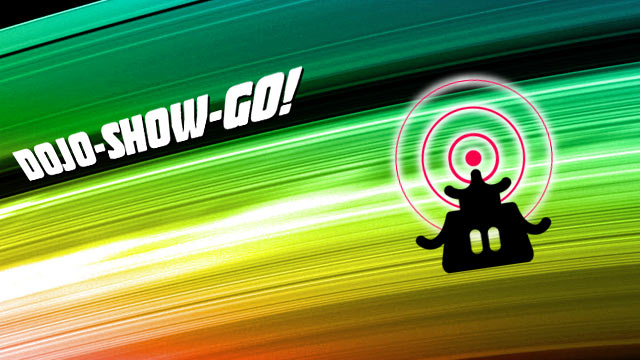
 |
| [display_podcast] |
Summary
We take an episode to go through all the listeners’ reactions to 3DS’s extra circle pad and upcoming games.
You can send in feedback to showmail at nintendojo dot com, facebook.com/nintendojo or twitter.com/nintendojo! You can also leave a comment below!
Recording Date
September 20, 2011
Hosts
Noah and James
Contents
00:00:00 Introduction & Ad Hoc Mario Kart Segment
00:15:58 What We’re Playing
00:24:47 Warm Fuzzies Feedback
01:11:48 Conclusion
01:13:18 Credits
01:14:56 Total Length
Links




 ShareThis
ShareThis







@James play Phantasy Star 4. It feels much more modern than II. Also I hope you like FFIX. I enjoy you’re negativity. It’s been missed.
Frankenstick didn’t come from me it came from 8-4 play. Seems to have been popularized by neogaf, weekend confirmed, and other big game networks. But I love Noah’s dramatic reading of it.
Well, I didn’t respond to that one reply because I didn’t read it. It’s a particularly weak argument though. So, I’ll comment on it now.
Comparison of phone revisions to console revisions would be silly. New phone revisions are planned obsolescence. They are made cheaply because they are intended to fail and be replaced when you renew your contract. That’s why we have a new iPhone next month which will include a new firmware update across the board which will probably break half the library of available titles in the App store forcing the individual game designers scrambling to fix compatibility issues on their own. That’s how that market works.
The comparison of PSP revisions to supposed 3DS revisions is that the 3DS revision would ADD new features. Sony likes to revision DOWNWARD for the most part. Removing the IR feature broke features in several of their launch titles. Which is one of the reasons that you can’t get Metal Gear Acid and Lumines on PSN. The PSP Go was originally pitched as a way of pushing PSN and convergence features. It’s part of the PSP family in the same way that the Game Boy Micro is part of the Game Boy family of devices. It’s not separate. Saying it is separate is dishonest.
The 5 to 10 life cycle on consoles is an interesting idea. But it’s mostly from Sony insisting that the PS2 would last for ten years. They had to do countless revisions and new control add-ons to extend that life. Which is what the Slide Pad is. It’s an add-on. It’s also a stop-gap to prevent games from not being ported to the 3DS in comparison to the Vita.
But yes, let’s look at life cycles for systems in comparison to when a replacement system launched.
NES to SNES spanned about seven years. (5 revisions)
SNES to N64 spanned about six years. (3 revisions)
N64 to GameCube spanned about five years. (1 revision)
GameCube to Wii spanned about five years. (2 revisions)
Wii to Wii U will span about five years. (1 revision)
Honestly, there’s a downward momentum between console cycles from Nintendo. If we go by when they were announced, it’s shorter.
GB to GBC = Almost nine years. (2 revisions)
GBC to GBA = About three years. (No revisions)
GBA to DS = About three years. (3 revisions)
DS to 3DS = About seven years (3 revisions)
On the handhelds, it’s all over the boards. Unless you look at Apple, which has five different versions of the iPod, most of which are on their fifth revision. They are on iPhone 4 and the iPad 2. So, is that screwing over customers? Eh. It’s not like an original iPod cost $399.99 and then was replaced by a slightly larger version less than a year later signaling a $100 price drop on the 5GB iPod you purchased at launch. Oh, wait. THAT HAPPENED.
Will the Slide Pad signal a thicker revision with two more buttons, a larger battery, and a second stick? Only if Nintendo actually puts out first party games that require it to operate within the next few months. Other than that, it’s a control option. There were mixed reviews on the MGS controls and there were two portable Metal Gear games that didn’t need a a second stick to control. Does the 3DS need a second stick? If they want third parties to be able to port games between the 3DS and the Vita, it’s a good idea. Because we’re sure the Vita will be a run away success with it’s worse than the 3DS battery life, lack of internal storage or included storage (Seriously, the 3DS has internal storage and included a memory card. Sony couldn’t do that? Maybe for the Vita revisions in 2012), and it’s launch line-up of such blockbuster titles as Same Game you have on the PS3 but with shoe-horned touch & waggle, Same Game you have on the PSP but can’t play because we never released it on PSN, and newer version of that game where you make old Super Mario Bros. levels while fighting terrible jumping mechanics. The Vita’s line up is comparable to the 3DS’s initial line up. But okay. I suppose it’ll sell for $250 and $300 respectively. Because that price point caused the 3DS to fly off the shelves.
Also, really? A certain co-host spends a little bit of time saying that people might not want a console experience on a handheld, than praises the Vita which offers a console experience on a handheld. Please be consistent.
tl;dr: Eh. Just read it.
Never change. :)
Hey guys!
First of all, I just have to remark that you were mixing up “Q Entertainment” with “Q Games” on the last podcast. Q Games consists of the fine fellows who developed Star Fox 64 3D and the PixelJunk series for PlayStation! Confusing? Yes. But important!
Second, regarding Mario Kart, I love the franchise and have played every entry in the series to death, with one exception, though not for any reason relating to the game itself. Somehow Mario Kart Wii managed to slip by me. I have the game, but I guess I got caught up with school and other titles at the time, and never was able to run through it. I’m incredibly excited for Mario Kart 7 this year, however, and will definitely play the crap out of it.
Finally, about Skyward Sword, unlike James, the motion controls might be the aspect of the game that I find most attractive (the gorgeous art direction perhaps a close second). I loved Metroid Prime’s pointer controls — Prime Trilogy has the definitive versions of the games, in my opinion — but they were decidedly unnecessary. It feels like Skyward Sword is the one where they’ve finally gotten it right; the entire game seems to be built around precise control and directionality of the sword, something that I doubt could ever be satisfactorily accomplished with an analogue stick. I’ll be the first one to decry the tacked-on motion controls found in many Wii titles, but for me, Skyward Sword is defined by its use of Wii Motion Plus and I would have it no other way.
Necessary Future Hardware Features
If the Wii U releases without support for an equivalent of DirectX 11/OpenGL 4.2, then it would be in a similar situation as the 3DS releasing without a second slide pad. Except I don’t think an expansion would be able to fix it.
It seems fairly obvious that the next generation development efforts are based around DirectX 11/OpenGL 4.2 functionality (Feel free to include any engines that I may have left out):
Epic Games’ Unreal Engine 4
id Software’s id Tech 6
Crytek’s CryEngine 4
DICE’s Frostbite 3
Techland’s Chrome Engine 6
CD Projekt’s RED Engine 2
Capcom’s MT Framework 3
Square-Enix’s Luminous Engine
Valve’s Source Engine
I can’t emphasize enough how critical this is. As long as the Wii U can support DirectX 11/OpenGL 4.2 level functionality and features, it should be able to compete with the new systems that Microsoft and Sony will eventually release. Of course the Wii U can run ports of games developed for the PS3 and 360, but the Wii U’s ability to run the next-gen engines will secure its position as a viable console for developers to release their future multiplatform games onto.
If the Wii U can handle the next-gen game engines that require a DirectX 11/OpenGL 4.2 level of functionality and features, then it will enjoy the multiplatform support that the PS3 and 360 had. If the Wii U cannot run the next-gen engines, then it will suffer from having a similar level of multiplatform support that the Wii had.
Hmmmm. I see so many people getting worked up over frankenstick, and I honestly don’t get it. Maybe that is just because I live in Minnesota, and I am always wearing hoodies, which usually have a huge pouch capable of comfortably fitting 3 3DSs. I normally don’t put my portable systems in my pocket anyway, it is too easy for them to scratched by some keys or a loose coin.
On the eShop front, have we heard anything more on the exclusive eShop titles? So far, no eShop title seems to have gotten much previous fan-fare (outside of…AUGH still can’t get over it…), they just sort of appear and surprise everyone. Have we heard anything else about Rolling Western and Mighty Switch Force in particular? Both of these have great potential as eShop games and I can’t wait to see ’em. I would like to fill out my 3DS Downloads library with some unique software. Also, are you guys excited about Super Mario Land II coming so soon, and Metroid II so soon after? Are you planning to pick em up? Noah, are you done being a tightwad and holding out on buying the 3DS?